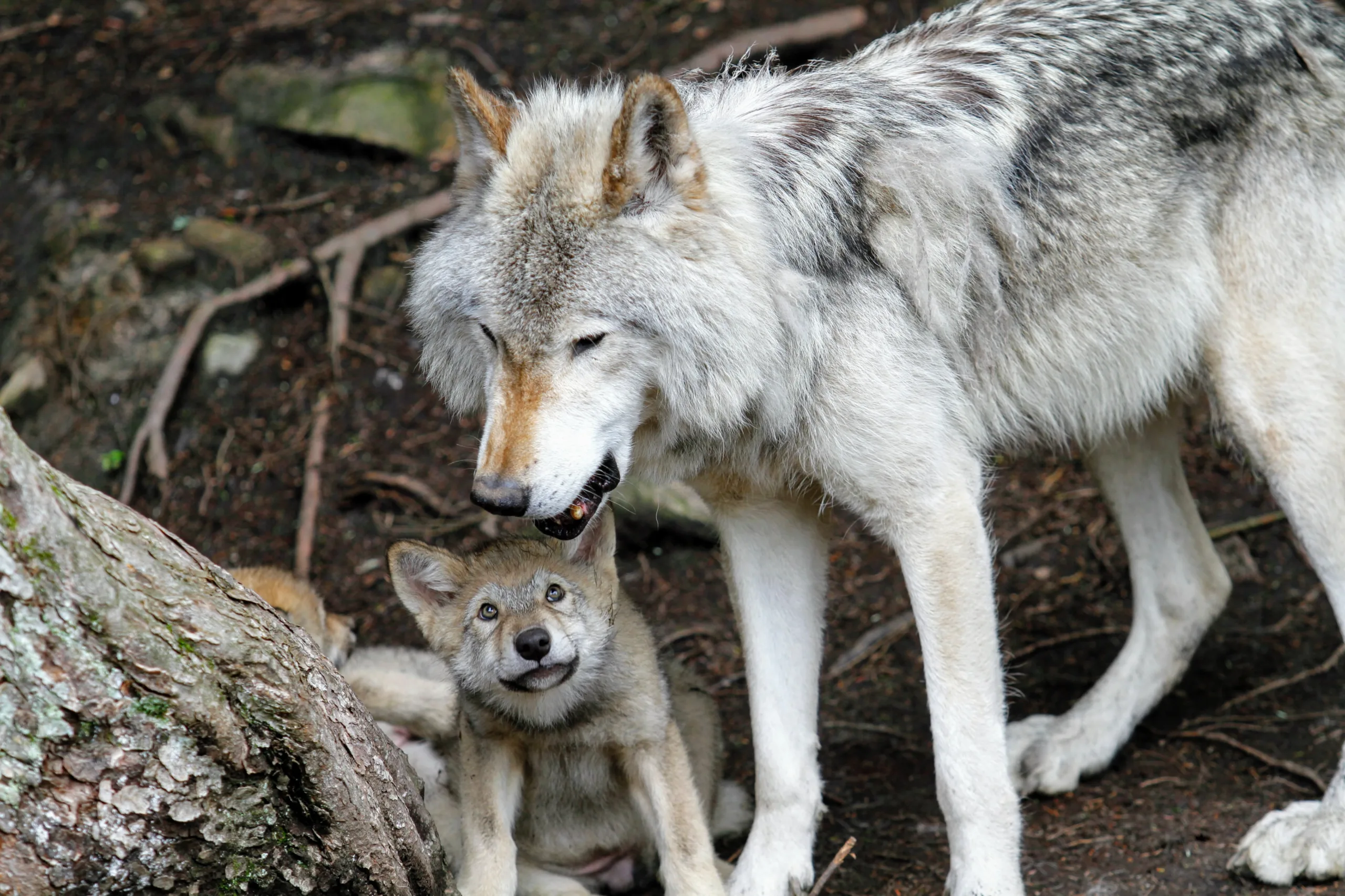How Big Are Wolves Compared to Dogs? Wolves and dogs are part of the same family, Canidae, and share many similarities in terms of anatomy, behavior, and genetics. However, there are significant differences in size between these two canines. In this article, we will explore the dimensions of wolves and dogs, highlighting their disparities and providing insights into their physical distinctions.
Fore more about dogs click here
How Big is a Wolf Compared to a Dog?
Wolves are generally larger and more robust than most domestic dog breeds. The size of a wolf can vary depending on the species and geographical location, but in general, they are larger than the average dog. Wolves typically stand between 24 to 34 inches (61 to 86 cm) at the shoulder and can weigh anywhere from 40 to 175 pounds (18 to 79 kg).
Are Wolves Bigger Than Dogs?
Yes, wolves are generally larger than domestic dogs. Wolves have evolved to be highly efficient predators in the wild, and their size reflects their adaptation to hunting larger prey and surviving in their natural habitats. While some large dog breeds can approach the size of certain wolf species, wolves, on average, are bigger.
How Big is a Full-Size Wolf?
A full-grown adult wolf, depending on the species, can vary in size. The gray wolf, the most well-known and widespread species of wolf, stands around 26 to 32 inches (66 to 81 cm) tall at the shoulder. Their body length typically ranges from 4.5 to 6.5 feet (1.4 to 2 meters), excluding the tail. Gray wolves can weigh between 60 to 175 pounds (27 to 79 kg).
How Big Are Wolf Dogs Compared to Wolves?
Wolf dogs, also known as wolf-dog hybrids, are the result of crossbreeding between domestic dogs and wolves. The size of a wolf dog can vary widely depending on the breeds involved in the crossbreeding. However, in general, wolf dogs tend to be larger than typical domestic dogs due to their wolf heritage. They can exhibit a wide range of sizes, with some individuals closely resembling wolves in terms of stature.
Size Disparities Among Wolf Species
It’s important to note that there are multiple species of wolves, and their sizes can vary. For instance:
- Gray Wolves (Canis lupus): As mentioned earlier, gray wolves are among the most widespread and well-studied wolf species. They exhibit the size ranges discussed above.
- Arctic Wolves (Canis lupus arctos): These wolves are adapted to colder climates and have a slightly smaller body size compared to gray wolves. Their size allows them to conserve heat more effectively.
- Eastern Timber Wolves (Canis lycaon): Smaller than gray wolves, timber wolves are found in certain regions of North America. They are generally more slender and have a lighter frame.
- Red Wolves (Canis rufus): Red wolves are smaller than gray wolves, with a height of around 24 to 26 inches (61 to 66 cm) at the shoulder and weighing approximately 45 to 80 pounds (20 to 36 kg).
External Resources for Comparative Canine Information
For further insights into the size and characteristics of wolves and dogs, consider exploring these resources:
Frequently Asked Questions About Wolf and Dog Size
Q1: How big is a wolf compared to a dog? On average, wolves are larger than domestic dogs, both in terms of height and weight.
Q2: Are wolves bigger than dogs? Yes, wolves are generally bigger than most domestic dog breeds.
Q3: How big is a full-size wolf? A full-grown gray wolf typically stands around 26 to 32 inches tall at the shoulder and weighs between 60 to 175 pounds.
Q4: How big are wolf dogs compared to wolves? Wolf dogs can vary widely in size depending on the breeds involved in their crossbreeding. However, they often tend to be larger than typical domestic dogs.
In Conclusion
The size differences between wolves and domestic dogs reflect their evolutionary paths and adaptations to different environments. Wolves have retained their larger size to excel in hunting and surviving in the wild, while domestic dogs come in a wide range of sizes due to human-directed breeding for various purposes. Understanding these distinctions can deepen our appreciation for both these remarkable canines and the diverse roles they play in our lives and ecosystems.
